Escape
The Decadent Odyssey: A train in blue and gold livery of unparalleled luxury
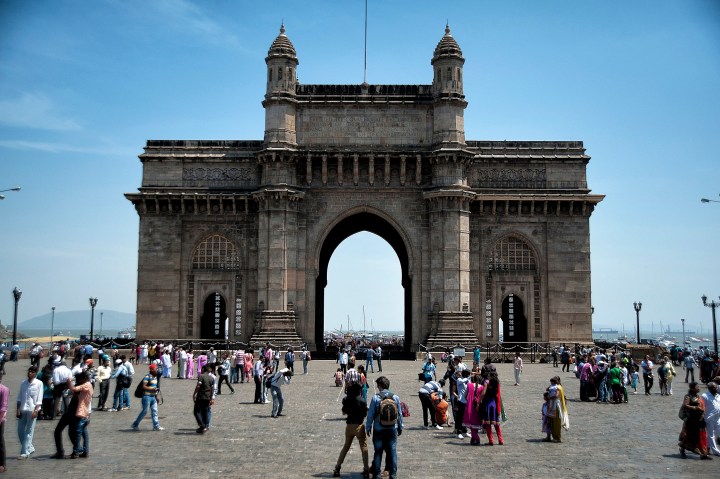
The Indian rail system is the second largest network in the world (after the US) and transports millions of people daily. Most rolling stock is for goods and commuters, but one train has an entirely different purpose.
India is a confounding country, a filigree but tattered silk fabric into which the future is being stitched with threads from an ancient past. It’s both shocking and astonishing.
People in rags sleep on pavements in the shadow of huge, modern skyscrapers; sacred cows wander unmolested through hooting traffic; the glare from Parisian-style stores illuminates Dalit untouchables on the pavements begging a rupee and Jains on motorbikes wear nose scarves to not kill insects by inhaling them.
The frame that holds the cloth together is two sprawling ancient stories, the Mahabharata and the Ramayana, which weave in and out of almost everything people do and believe.
To outsiders, most of this is inexplicable, which is why everyone who tries to explain India resorts to metaphor. Gregory David Roberts, who wrote Shantaram, a rambling novel about Bombay, found his metaphor in odour — “the smell of gods, demons, empires and civilisations in resurrection and decay … the sweet smell of hope … and the sour smell of greed”.
For me, it was less lyrical and more tangible: bicycles and trains, of which India has more than almost anywhere else on earth.
I first became aware of the bicycles under the baking Bombay sky outside Churchgate Station. Each day at noon hundreds of men in white tunics arrive on ancient-looking gearless bikes and begin detraining thousands of lunches in bags and tins called dabbas destined for city workers.
None but the barely literate dabbawalas themselves, who provide the service, can operate the bafflingly complex system of symbols, colours and key numbers to mark the bags and tins. It is a mystery how millions of these identical containers move each day from mothers or wives to the right man or woman in a city of 30 million on an economy measured in cents. It’s a magic that connects the ordinary with the impossible: a synecdoche for all India.
Finding the magic train
Another piece of magic is the Indian rail system. Like so many invaders before them, the British constructed impressive buildings and created a rail system for the purpose of social control, laying the first tracks in 1835.
They never intended to ever leave, but leave they did in 1947, ousted by a man with pebble glasses and a loincloth, Mahatma Gandhi.
Independent India has been expanding the railway system ever since. The country has 115,000 kilometres of track, 7,500 stations and its 60,000 coaches carry around 24 million people daily. With over 1.4 million employees, it’s the largest employer in the country.
Several blocks east of the dabbawala terminus is the high church of Indian railway architecture, a cavernous, beautiful station built by the British and named after Queen Victoria. Unimaginable millions of commuters pass through it each week in calm, polite orderliness, which is another of the country’s characteristics.
My destination on one of its many platforms was a train in blue and gold livery of unparalleled luxury. More than 700 metres long with two sumptuous lounges, two dining cars, two kitchens with 10 chefs, a gym and health spa and cabins with en suite bathrooms — it was a princess among the scruffy commuter trains.
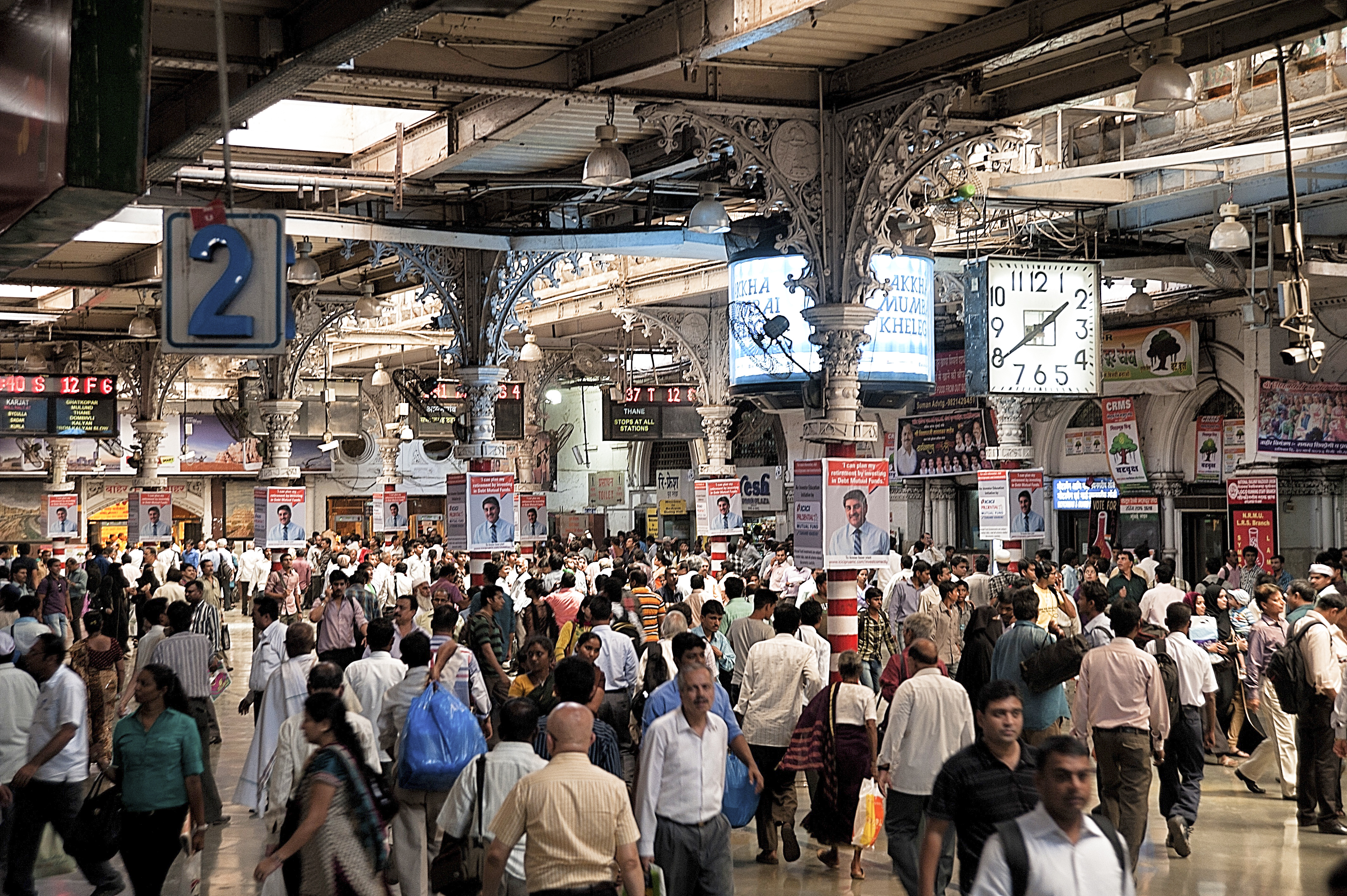
Mumbai Central Railway Station is one of the busiest in the world. Image: Don Pinnock
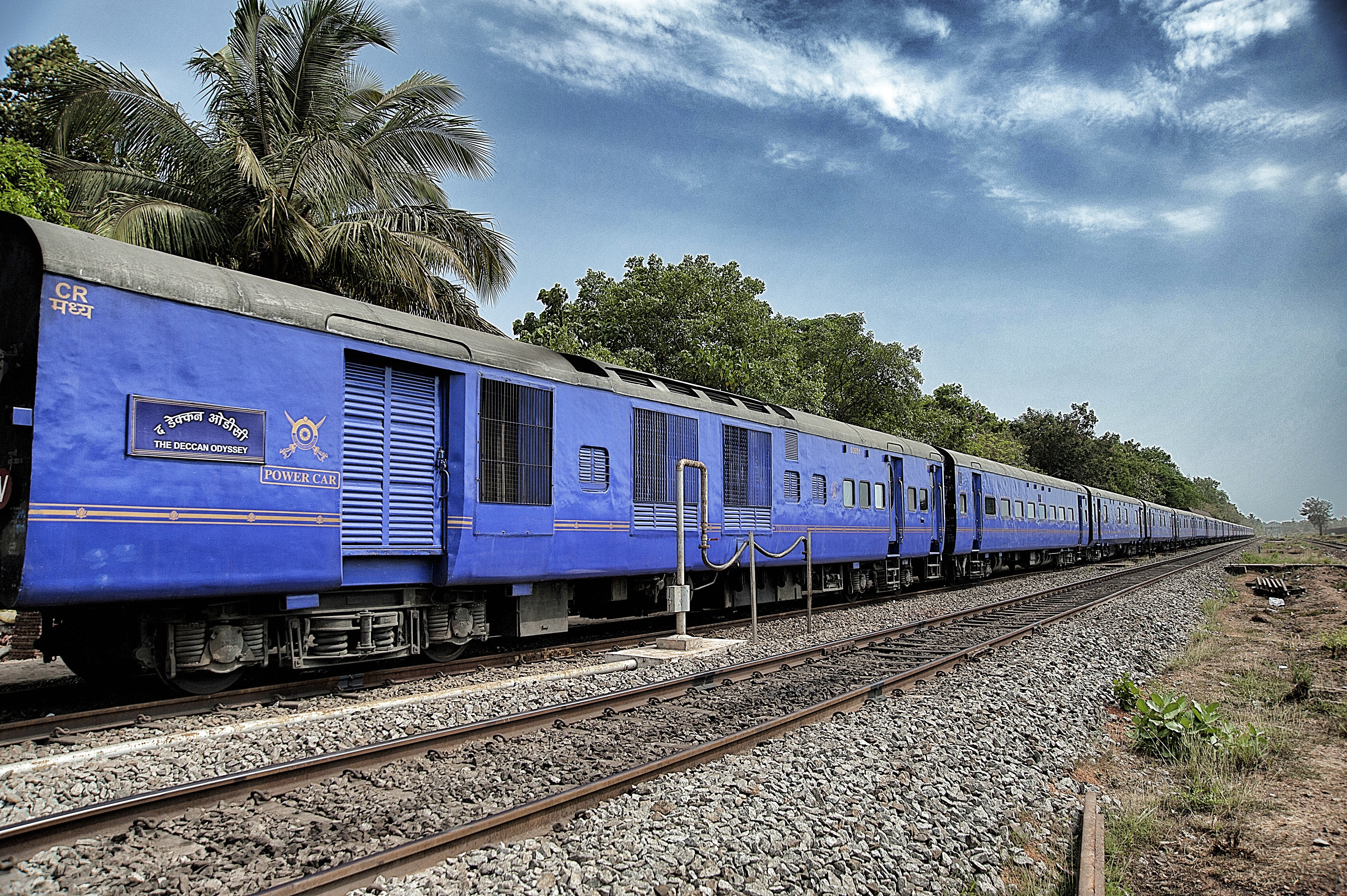
The Deccan Odyssey train is over 700 metres of pure luxury. Image: Don Pinnock

Each exquisitely panelled cabin has its own butler. Image: Don Pinnock

On the Deccan Odyssey the menu can get you gaping beforehand and grinning with pure pleasure afterwards. Image: Don Pinnock
The Deccan Odyssey, a conveyance for royalty or governors, was the beginning of my love affair with Indian trains. In a country with such disparity of wealth it’s hugely expensive and frankly outrageous — and yet extremely seductive. No wonder the British Raj became a favoured posting.
I was met by a valet, Pramod Pandy who, over the following week, would tap on my door at dawn with a silver tray of tea and Oreo biscuits, make the bed and place flowers on the folded-back duvet in the evening. If I’d asked he would have selected clothes for the day and dressed me.
The palace had wheels, but apart from that, my stay was to be pure Bollywood meets Downton Abbey.
Destination: the state of Maharashtra.
Purpose: pleasure.
The train’s route would be from Mumbai to Goa, then inland across the Deccan Plateau (from which the train gets its name) through Kolhapur and Aurangabad, to the mysterious caves of Ajanta and Ellora and the sacred city of Nashik. Sometimes it goes the other way round. As the Deccan Odyssey pulled out of Victoria Station I had absolutely no idea what to expect.
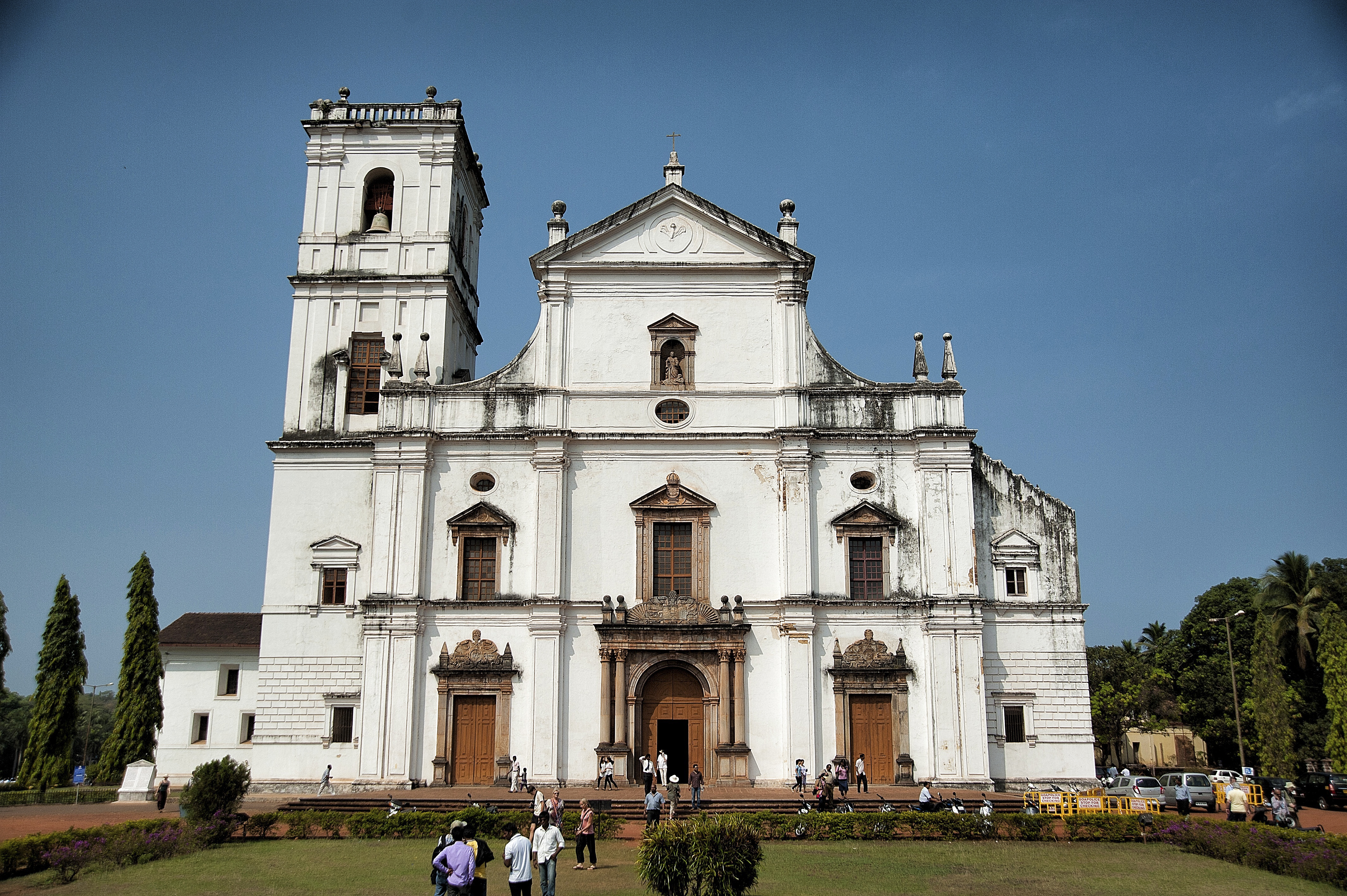
The Catholic Church in Goa. Image: Don Pinnock
Down to Goa
Balooo! It was deep in the night and I was being rocked and gently bumped as the train headed south, blowing its soulful horn to clear the tracks of cows, water buffaloes and wandering sadhu monks lost in meditation.
By breakfast, we were in Kudal, where a bus and a boat took us to the island fortress of Sindhudurg, a one-time naval base of the 17th century Maratha Empire. There’s not much left there now but stout rock walls, the cry of gulls and crashing waves.
Goa, further down the line, was a Portuguese colony from 1510 to 1961 and still feels like part of Lisbon. Over the centuries it was renowned — and invaded — for spices such as cardamom, nutmeg, vanilla, cloves, chillies, coriander and pepper.
Before the marauding Portuguese came the Sumerians, Dravidians, Aryans, Buddhists, Jains and Turkish Mughals. After the Portuguese left, the next invasion was by hippies, who revelled in the relaxed lifestyle, beautiful beaches and, undoubtedly, certain herbs. Hints of all these invaders remain. It’s both a beautiful and organisationally confounding city (I got lost going shopping 100 metres from the bus).
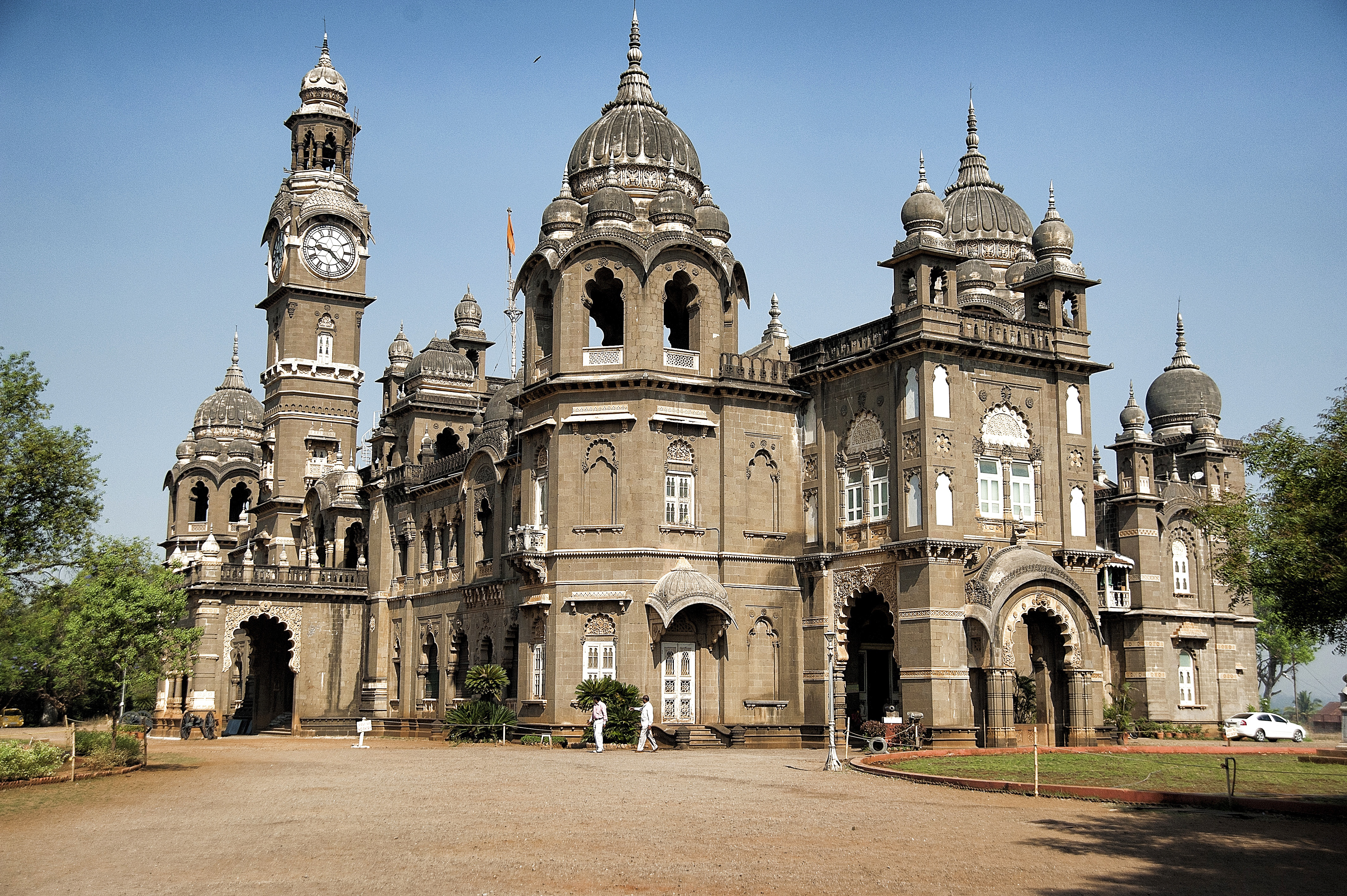
A palace in Kolhapur, Maharashtra. Image: Don Pinnock
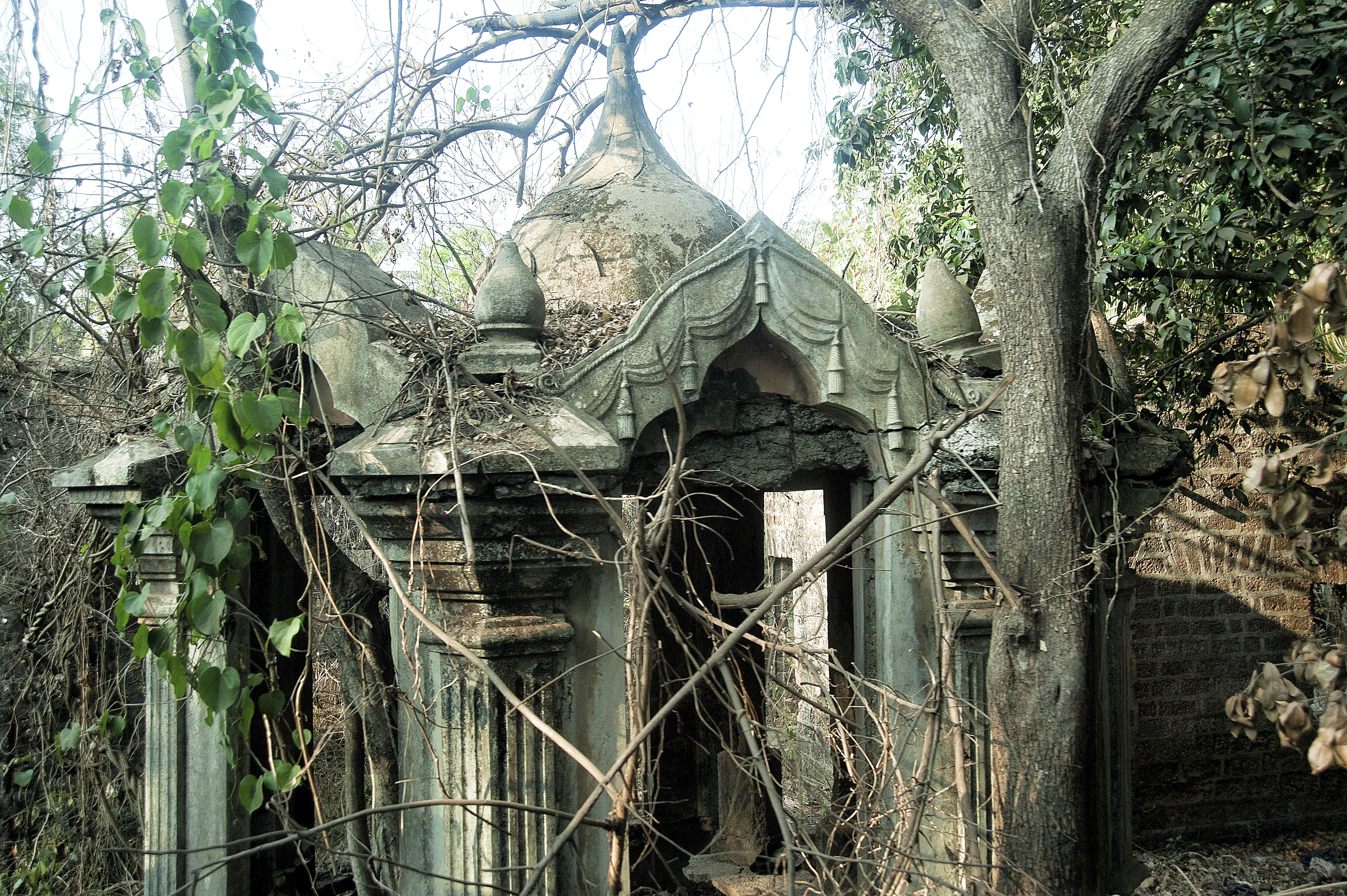
Ancient and modern India seem to intersect seamlessly. Image: Don Pinnock
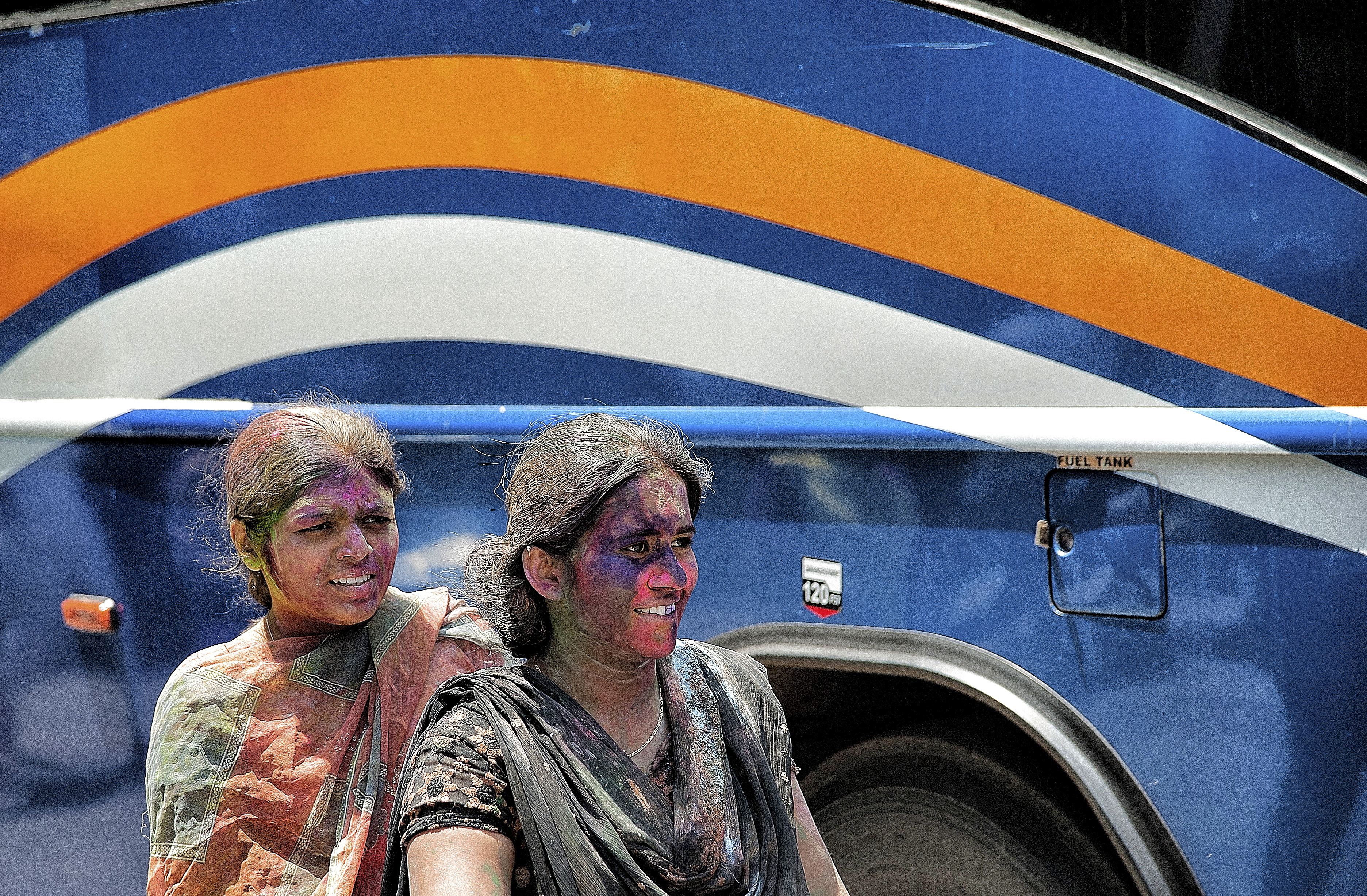
During the time of Holi you cannot avoid being drenched in coloured powder. Image: Don Pinnockau
A more ancient India unfurled as we headed inland towards Kolhapur. It’s a city of temples and palaces and is named after a demon, so the Mahabharata tells us.
Holi, the festival of colours, was in progress when we arrived and youngsters at the New Palace (a museum of royal hunts) were lobbing each other with brightly coloured powder. The festival has to do with another demon, but that’s a tale too multi-layered to recount here. Indian stories are complex.
At the Old Palace, young men and women were practicing some scary sword fighting. At a magnificent Hindu temple within the palace precinct, I lost my shoes because someone moved them off the steps. Shiva doesn’t like shoes in his temples. I found them in a dustbin.
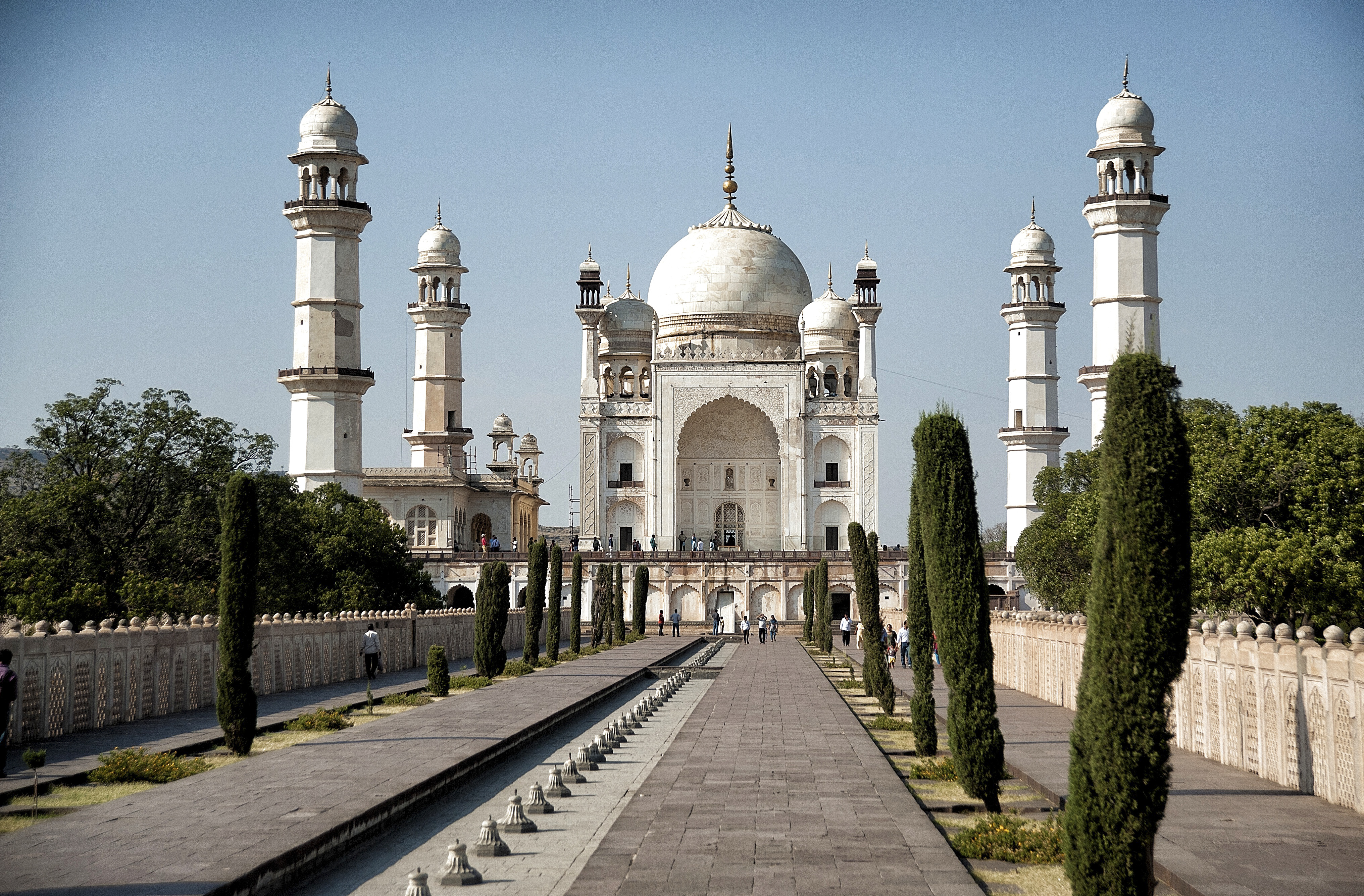
Bibi Ka Maqbara is the “fake” Taj Mahal in Aurangabad Image: Don Pinnock

The murals in the Buddhist caves of Ajanta are the root of much of India’s artistic tradition. Image: Don Pinnock
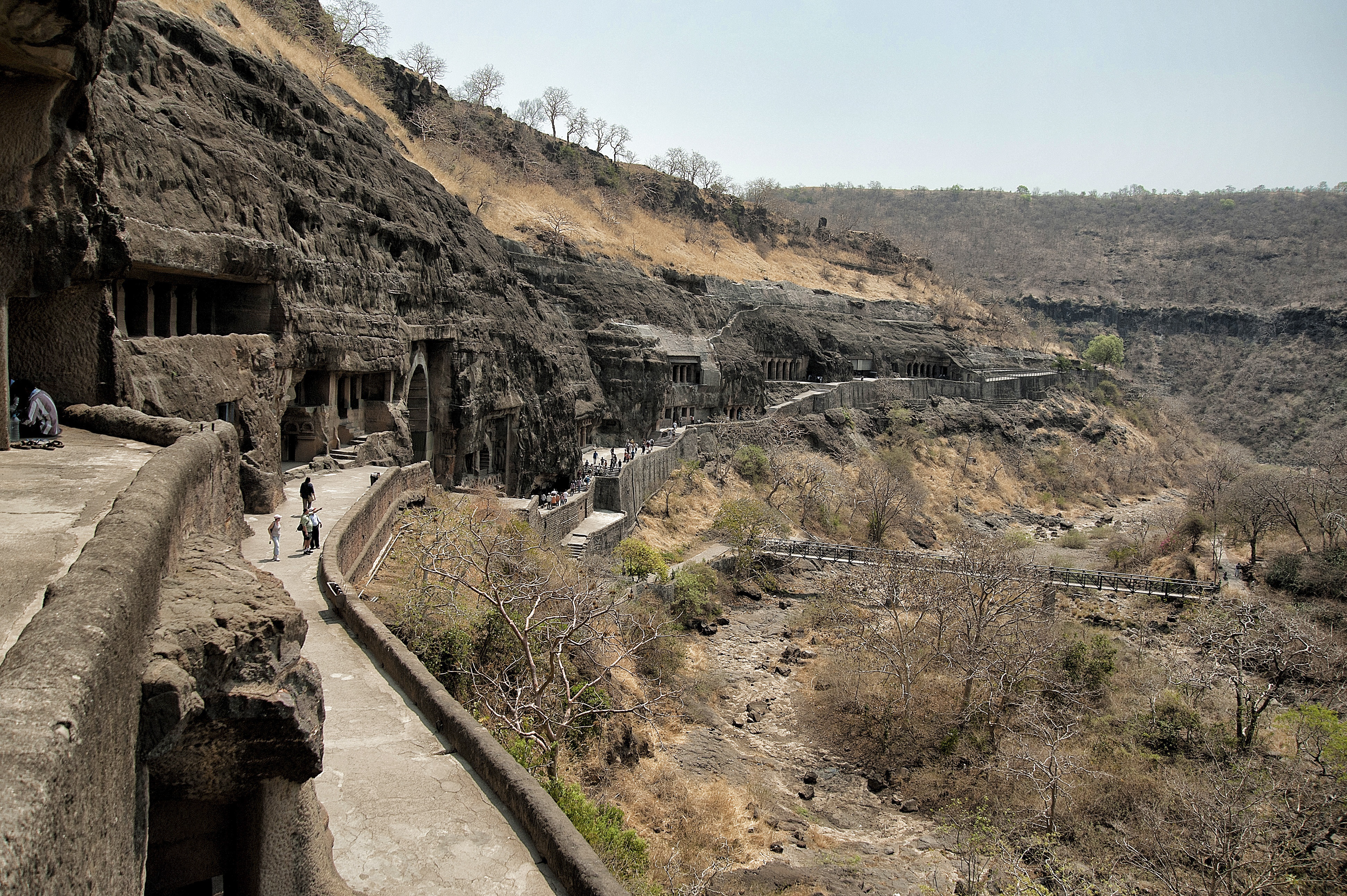
The Ajanta Caves are temples carved out of the mountain over hundreds of years. Image: Don Pinnock
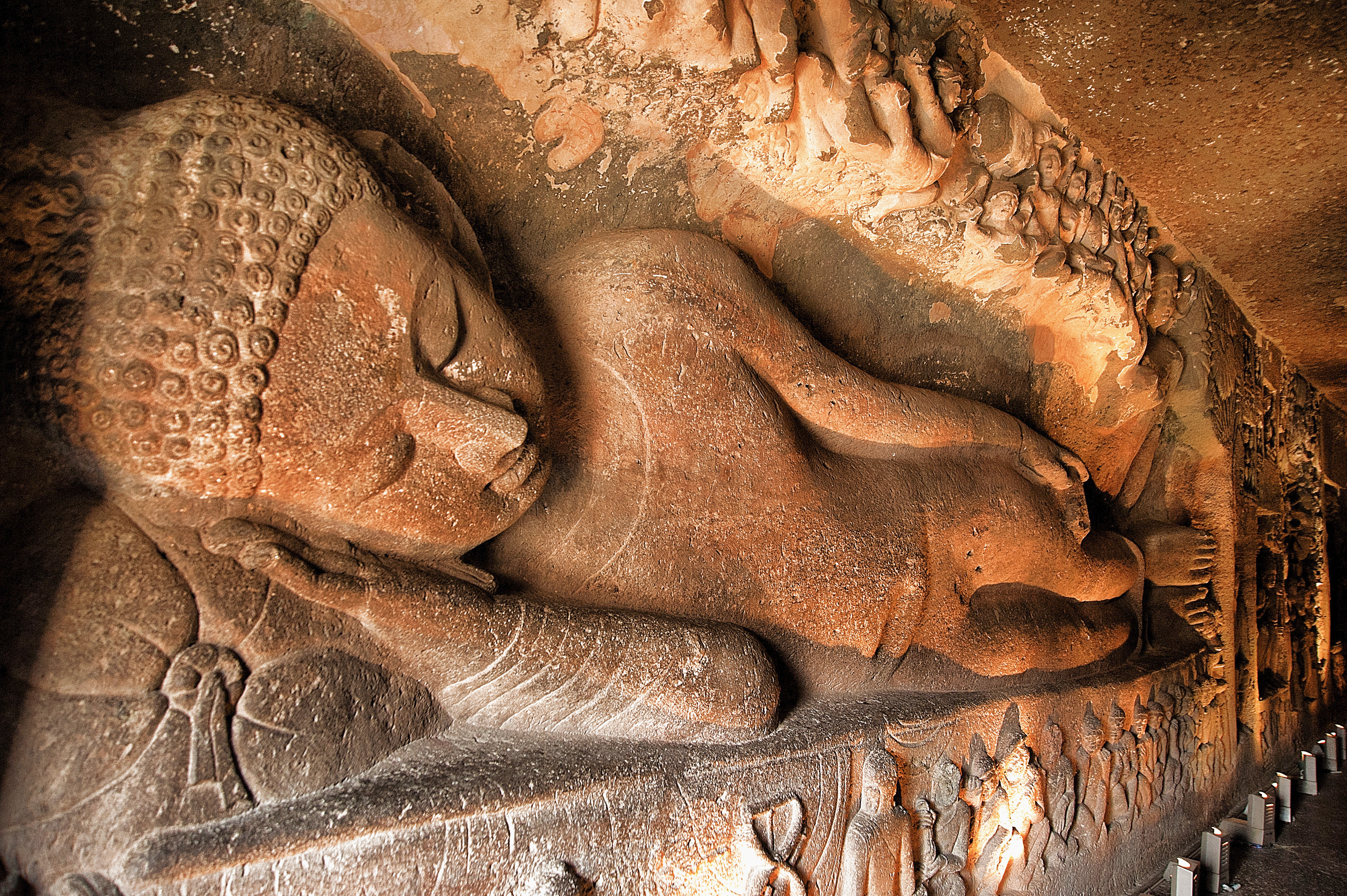
Sleeping Buddha in the Ajanta Caves in Maharashtra. Image: Don Pinnock
In Aurangabad the next day I received bindi, a colourful dot between my eyebrows in the place of the sixth chakra, the seat of concealed wisdom … and my religious immersion began. After a visit to the grim Daulatabad Fort and Dakkhani Taj (a smaller version of the Taj Mahal), our bus wove and hooted its way up a mountain pass to the Ellora Caves.
These are 34 exquisite Buddhist, Hindu and Jain temples carved out of a mountain alongside each other — a fine example of religious harmony. Work began on them in the sixth century and continued for the next 400 years. As an expression of religious zeal, they’re simply astounding.
Ellora was the taste of things to come. The following day, after an indulgent train breakfast, we headed for the Ajanta Caves. These are entirely Buddhist, carved over a period of about 800 years from the second century BC and appear to have been a monastery with colleges and living quarters.
Deep in a valley, the 28 temples were covered by jungle after they were abandoned and only rediscovered in 1918 by a British officer hunting tigers. Their isolation preserved the rich and detailed artworks on the temple walls from Mughul desecration and today they define much of Indian painting.
The holy city
Our final destination was the holy city of Nashik which hosts one of the largest religious gatherings in the world (80 million people) every 12 years — and they all get fed.
Towards sunset, I walked down to the banks of the Godavari River and sat beside a sadhu chanting next to the slow-flowing water. Men and women were washing themselves and vendors sold small dishes of flowers with a candle. These were set afloat on the darkening stream.

Women bathe in the Godavan River at the ancient city of Nashik. Image: Don Pinnock
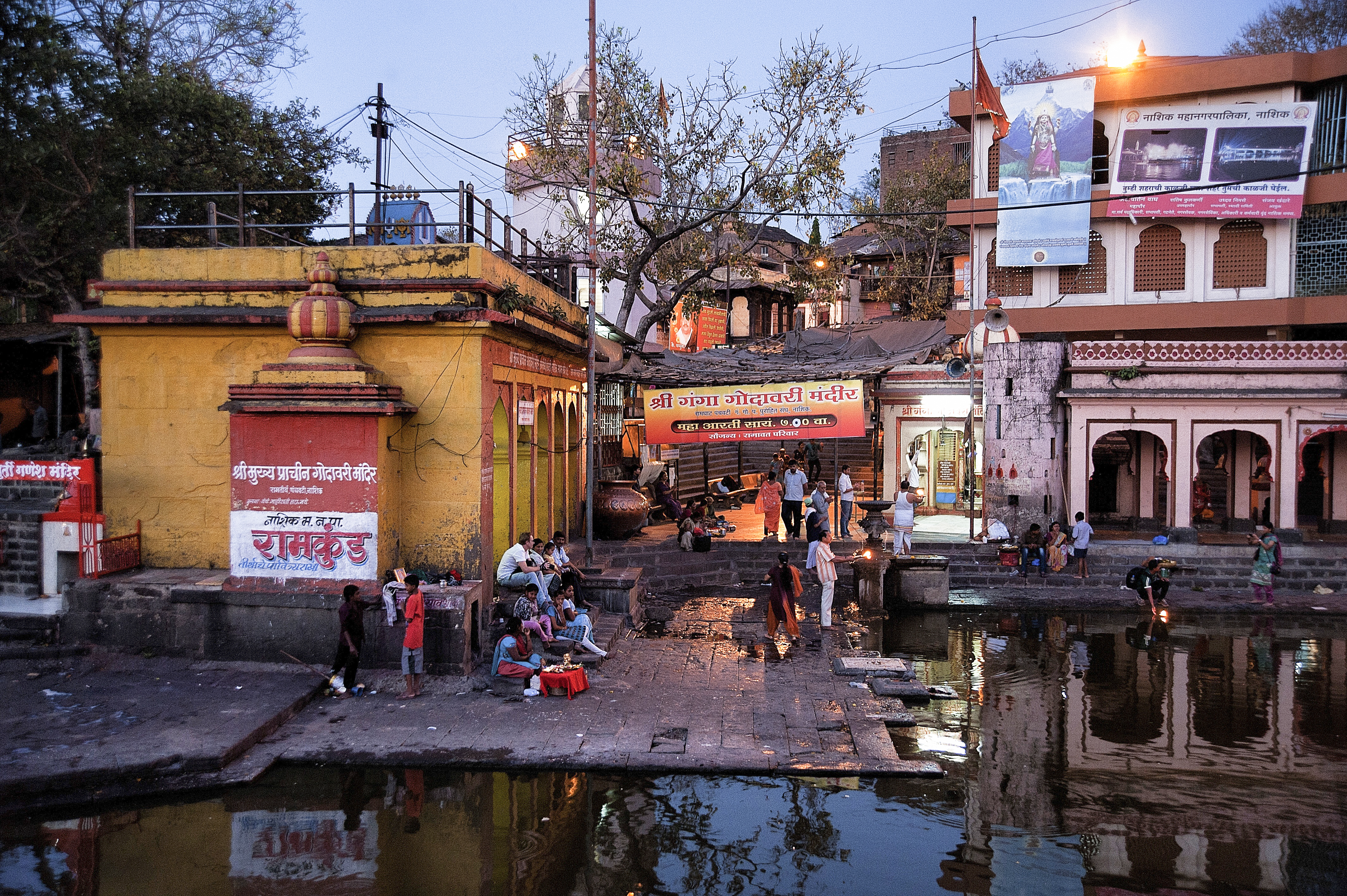
Every 12 year millions of pilgrims visit the holy city of Nashik. Image: Don Pinnock

Floating candle seller in Nashik, Maharashtra. Image: Don Pinnock
As night fell a Hindu temple was floodlit and the statues of friendly-looking gods and demons glowed along the banks. It was part carnival, part religious ceremony and bathed in peace.
In an open market, cows were sampling displayed vegetables unhindered as they strolled among the stores; men chatted with their arms across each others’ shoulders; beautiful young women discussed the merits of the fruit on sale while surreptitiously eyeing men on bicycles. What I sensed around me was not Shantaram’s smell of gods, demons, empires and civilizations in resurrection and decay but its sound. And that sound was laughter.
As the Deccan Odyssey barrelled into the night of our final journey back to Mumbai, I dined on chicken cooked in onion tomato gravy, mushrooms, peas with capsicum stewed in spices, cottage cheese in cashew nut and coriander sauce plus marinated lamb with basmati rice.
I could have had roasted carrot and orange soup followed by grilled prawns with orange compote and pesto potato, but when in India… Each evening the fare had been different. The meals on the Odyssey are prepared by Taj Hotels and are so delicious they’re dangerous.
We pulled into the chaos of Victoria Station and, yes, after the Deccan Plateau, Bombay had the sweet smell of hope and the sour smell of greed. And millions of gently rusting bicycles. As I stepped off the train the cloak of royalty slipped from my shoulders, but the silken cloth of India’s magic remained. DM/ ML
The Deccan Odyssey is, of course not a cheap holiday at $7,320 (R102,480) a double cabin for the eight-day adventure but, hey, you get your own batman to pamper you and great food. It was put on hold during Covid lockdowns and will be back on the rails in October 2022. Booking is at www.deccan-odyssey-india.com. Plan ahead.
The journey
- Day 1: Mumbai
- Day 2: Sindhudurg Nagri
- Day 3: Goa
- Day 4: Goa/Vasco
- Day 5: Kolhapur
- Day 6: Aurangabad/Ellora Caves
- Day 7: Ajanta Caves/Nashik
- Day 8: Mumbai
















 Become an Insider
Become an Insider
Comments - Please login in order to comment.